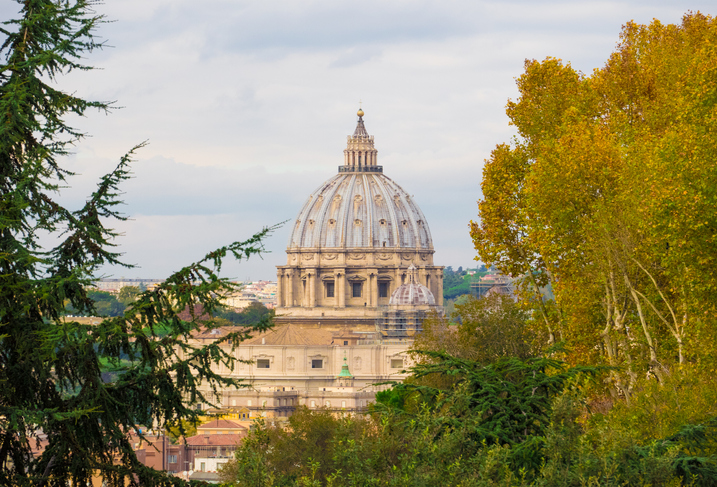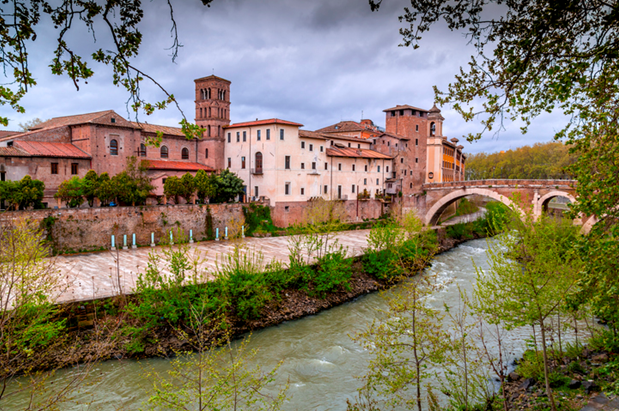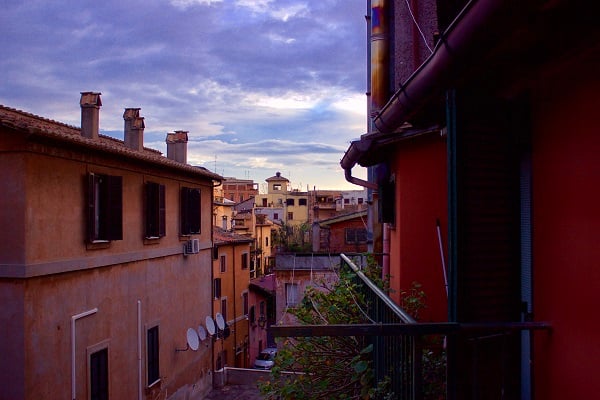

Translating to “across the Tiber,” Trastevere is a culturally diverse and close-knit district. Its cobblestone streets are reminiscent of the medieval era, while its shops, cafes and restaurants showcase its youthful charm. With JCU’s Guarini campus located near the Tiber River, students have Trastevere at their doorstep. Discover some fun facts about Trastevere!
1. Trastevere Was an Immigrant Settlement
In the Regal period, the land west of the Tiber belonged to the Etruscans, only captured by Rome after a battle between the two civilizations. Because the Romans were only interested in the Tiber for trade purposes, the land across the river was left for citizens to develop themselves. Fishermen, sailors, and immigrants built the Trastevere district from the ground up, making it the culturally rich and diverse neighborhood it is today.
2. Via della Lungara, JCU’s Main Campus
On the street where JCU is located, Via della Lungara, you’ll find Villa Farnesina, a Renaissance villa with frescoes by artists like Raphael.
Across the street is Palazzo Corsini, home to Italy’s National Academy of Sciences and the National Gallery of Antique Art, whose collection includes works by Titian and Caravaggio. Behind it is the University of Rome’s Orto Botanico (botanic garden), which features more than 7000 plant species.

3. Piazza Santa Maria in Trastevere
The heart of Trastevere is Piazza Santa Maria, a lovely square that is a favorite location for street musicians. The 12th century church that gives its name to the piazza is one of Rome’s oldest, and features glittering mosaics by Pietro Cavallini.
4. If You Study in Rome, You’ll Love the International Cuisine
Students who study in Rome experience both Italian and international dining, all within Trastevere. With an assortment of restaurants serving Indian, Japanese, Thai food and more, Trastevere is the neighborhood Romans favor for an international culinary experience.

5. Gianicolo Hill: A Star-Studded Site with Stunning Views
Known as the Janiculum Hill in English, the Gianicolo provides an especially beautiful view of Rome’s ancient architecture. Students who walk up Via Garibaldi to the Gianicolo will discover monuments to historic figures Giuseppe Garibaldi and his wife Anita.
History lovers and students who study Classical Studies in Rome will also enjoy the climb. Although the building no longer stands, Julius Caesar once owned a villa and estate on the top of the Gianicolo Hill, where Cleopatra allegedly stayed while visiting Rome.
6. Cinema America and Student Film-Lovers
In the 1950s, this was a hotspot for Trastevere’s expat population. When the building closed in the early 2000’s, student activists occupied the cinema and began showing their own curated film collections. Cinema America still has a large student activist following, supported by residents committed to preserving Italian cultural-historic landmarks.
7. “Little Madonnas” Helped Reduce 15th Century Crime
These portraits of Madonna were placed strategically around piazzas in the 1500s to deter Rome’s devout Catholic population from committing street crimes. Whether this strategy truly impacted local crime rates is unknown—but perhaps it’s no coincidence that Rome remains one of the safest cities in Europe!
8. Director Sergio Leone Grew Up There
Anyone attending an English speaking university in Italy will have heard of legendary Italian director Sergio Leone. His Spaghetti Westerns starring Clint Eastwood are beloved by film buffs and classic movie lovers. Sergio Leone actually grew up in the neighborhood of Trastevere, on Viale Glorioso—a fitting street name for a future cinematic hero.
Want to study abroad in Rome?
Contact JCU for more information.




